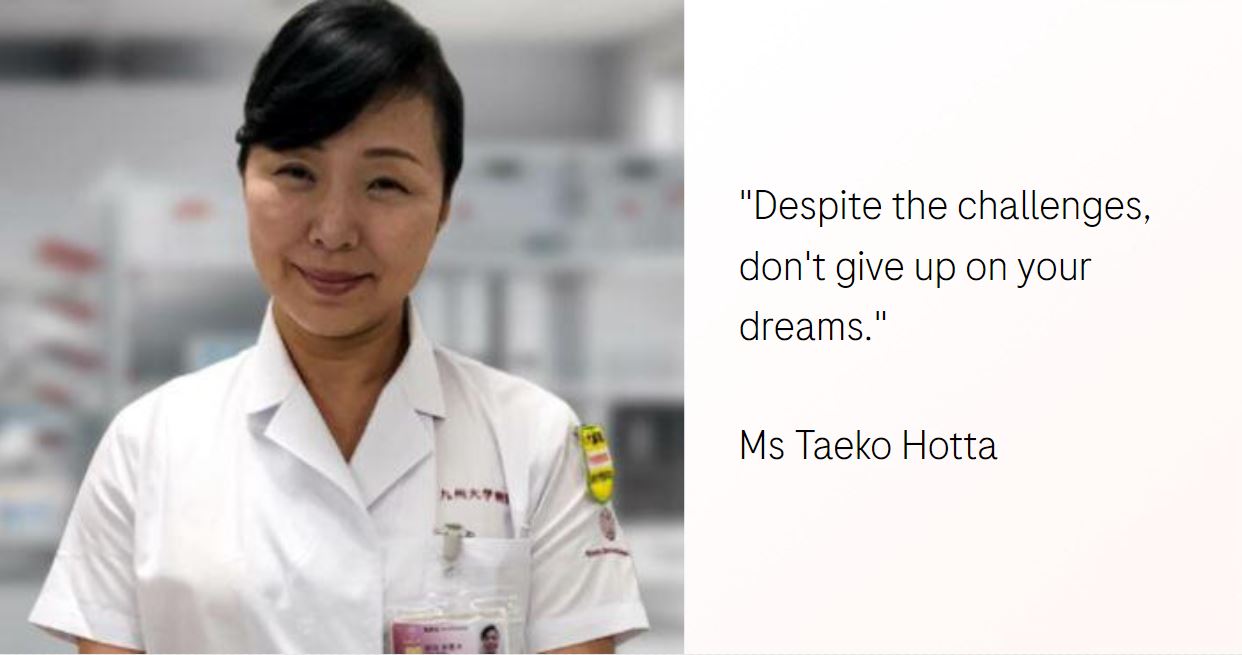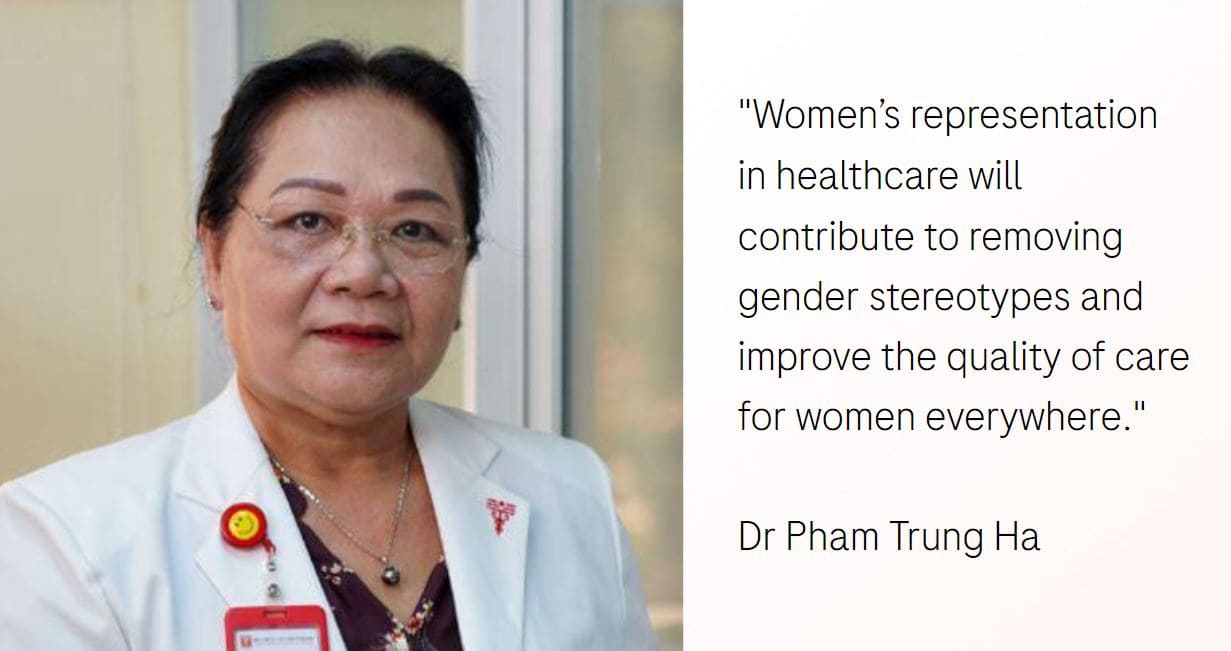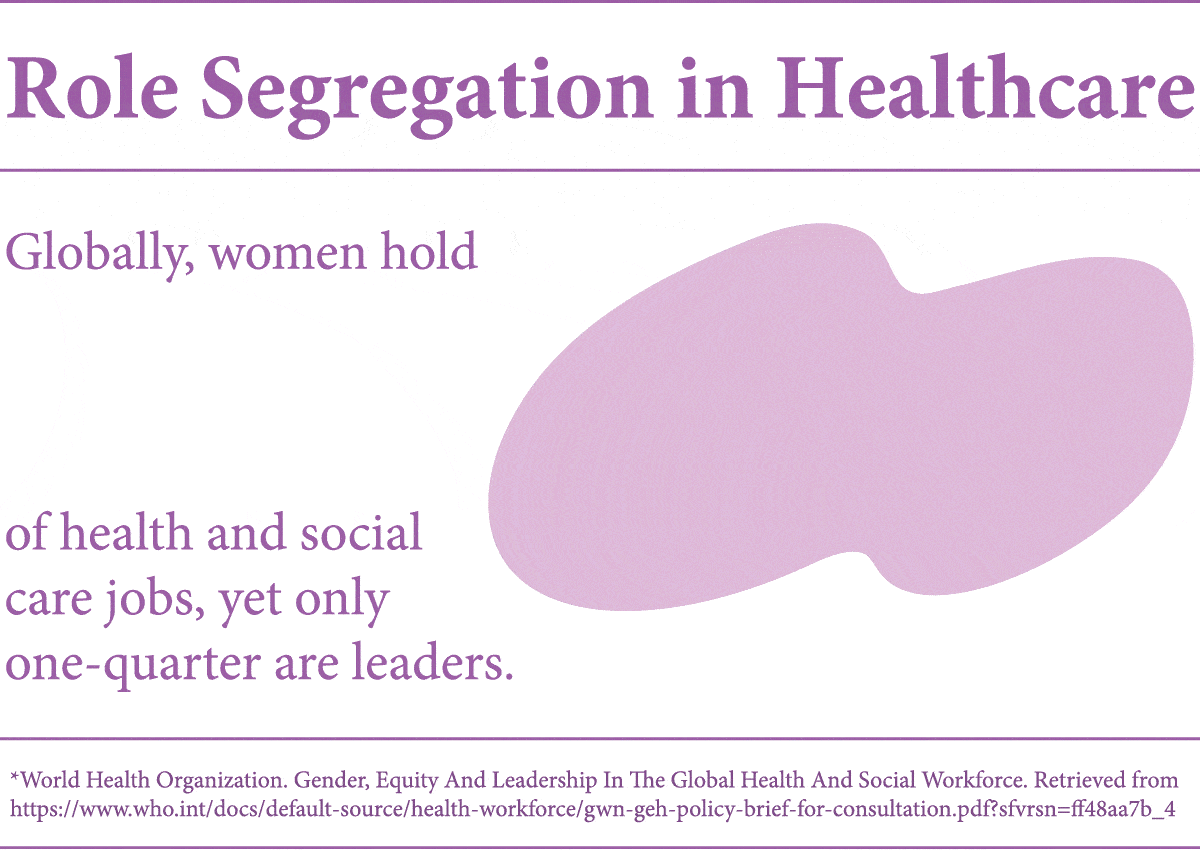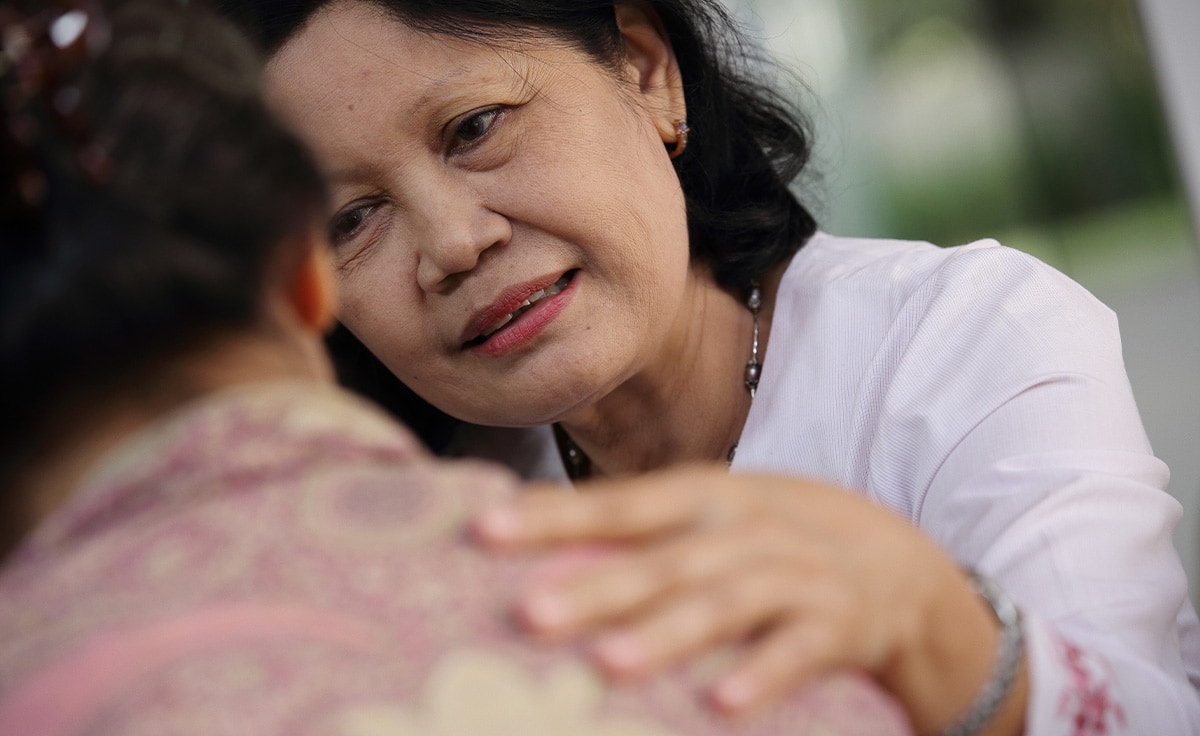The lack of women in healthcare can hinder accurate diagnosis for women, according to a report by Foundation for Innovative Diagnostics (FIND) and Women in Global Health.1
Some may start their careers out of passion, while others do so for pragmatic reasons. For Japan-based Taeko Hotta, it was a mix of both. Since young, her goal has always been financial independence, but she knew that her career options were limited.

“At that time, the only occupations where women could build a career without facing gender obstacles were either teachers, nurses, pharmacists or clinical laboratory technologists,” Hotta recalls. Thankfully, the decision was simple. Always fascinated by the science, technology, engineering and medicine (STEM) fields since her teenage years, Hotta’s interest in clinical laboratory grew stronger.
Today, as the Head of Laboratory at Kyushu University Hospital in Fukuoka, Japan, Hotta is also the acting head of the hospital’s Medical Technology Department. Her story is a rare one if you consider the numbers. In Japan, the latest data available shows that women filled just 13 percent of management roles in 2019 — the second-lowest country in the Organisation for Economic Co-operation and Development (OECD).2
What will it take to see more women leaders in diagnostics?
“At the social level, the burden of household chores should be shared more at home. Surprisingly, the reality is that the burden of housework on Japanese women is among the heaviest in the world. At the political level, a ‘system’ to increase the number of women in leadership positions should be introduced, rather than being solely dependent on the effort made by individuals or companies.”

Forging Gender Equality in Healthcare
The disparity in gender equality in healthcare can be seen across the world. “The higher the position, the less the percentage of women participating,” observes Vietnam-based Pham Trung Ha, who is the Deputy Medical Director and Head of the Laboratory Department at Saigon International Hospital. That is despite the fact that women far outnumber men in the healthcare workforce. According to the World Health Organization,3 women hold 70 percent of jobs in health and social care, and 90 percent in nursing. Yet, they account for just 25 percent of leadership roles.
Despite these daunting numbers, improvements have been made over the years, Dr Trung Ha notes. In the case of Vietnam, this could be partly attributed to the government’s commitment to gender equality. This has led to the development of various legal frameworks concerning the rights of female workers,4 such as the Law on Gender Equality established in 2006.
In Saigon International Hospital, for example, Dr Trung Ha shares that while women account for 66 percent of the workforce in 2021, there is still an equal number of male and female leaders.
Gender equality, of course, is not just about the dry statistics. The lack of gender representation — particularly in healthcare — can have dire consequences. In 2020, the Foundation for Innovative Diagnostics (FIND) and Women in Global Health released a report that examines how empowering women can lead to better health outcomes.4 The report found that gender bias hinders accurate diagnosis for women; for example, while tuberculosis (TB) is often seen as a “male disease”, more women were found to be dying of TB-related causes compared to all causes of maternal mortality.
“Assumptions and thought filters are not things of the past; they are still here today,” states Hotta. To reduce the risk of gender bias, Hotta emphasises that more must be done to increase women’s participation in healthcare, especially in areas like diagnosis and treatment. Changes such as increasing the number of women in leadership positions are key. Hotta cites her own experience as an example. She will always remember 1993 — the year the first woman was appointed as the Head of Clinical Laboratory Technologists in Kyushu University Hospital. Having such role models goes a long way in inspiring and motivating younger generations of women. In Hotta’s case, her hard work paid off as she assumed the same role of Head of Clinical Laboratory Technologists less than two decades later.

How will female representation in diagnostics and healthcare help prevent gender bias?
“Women’s representation in diagnosis and healthcare in general will contribute to removing gender stereotypes and improve the accuracy of diagnosis of patients and disease patterns.”
Dr Trung Ha shares the same sentiments about the need for female representation, explaining that this representation in diagnosis and the healthcare industry will contribute to improving accurate diagnosis of patients and disease patterns.
As a leader in the Saigon International Hospital, Dr Trung Ha has made it her mission to actively contribute to women’s healthcare and diagnostics, whether it is through conducting research or working with the Board of Directors at the hospital. She’s pleased that medical advancements, such as the application of thyroid and biochemical tests to diagnose pregnancy pathologies, have helped to reduce the rate of obstetric complications and raise the quality of women’s health in recent years.

Finding Success at Work for Women in Healthcare
Dr Trung Ha advises women to stay passionate, enthusiastic and motivated in their work. In her experience, continuous learning and open communication with colleagues has significantly helped her in her career.
Meanwhile, Hotta hopes that increased gender diversity, especially in the diagnostics space, will lead to better collaboration. She believes that laboratories can work better with other departments and divisions in medical institutions, contributing to better healthcare for all.
That said, women with children may find it harder to balance work and family life, acknowledges Hotta, who has four children. To that end, governments and companies must actively contribute to bridging the workforce gender gap and encourage more women to take on leadership roles.
Childcare is a great experience, but one that should be more equally shared. Rather than assuming that childcare is done purely by women, men can also take leave and actively participate to create a better working environment. Despite the challenges, Hotta urges women not to give up on their dreams. Experience gained outside of work can enhance one’s leadership abilities, she adds. With a ground-swell of ever more women climbing the ladder, the future looks bright for a more equal healthcare workforce.
Diagram Dialogues
Subscribe to our podcast to hear expert insights from the world of diagnostics
References:
1Women in Global Health (2020). Health in Their Hands: Testing & Women’s Empowerment Means Better Health for All. Retrieved from https://c8fbe10e-fb87-47e7-844b-4e700959d2d4.filesusr.com/ugd/ffa4bc_48abbc49eea14129ab2f9331382b9f22.pdf
2Jones, R., Seitani, H. (2019). Labour Market Reform in Japan to Cope With a Shrinking and Ageing Population. Retrieved from https://www.oecd.org/officialdocuments/publicdisplaydocumentpdf/?cote=ECO/WKP(2019)37&docLanguage=En
3World Health Organization. Gender, Equity And Leadership In The Global Health And Social Workforce. Retrieved from https://www.who.int/docs/default-source/health-workforce/ghwn-geh-policy-brief-for-consultation.pdf?sfvrsn=ff48aa7b_4
4 Foundation for Innovative Diagnostics (2020). Health in Their Hands: Testing & Women’s Empowerment Means Better Health for all. Retrieved from https://c8fbe10e-fb87-47e7-844b-4e700959d2d4.filesusr.com/ugd/ffa4bc_48abbc49eea14129ab2f9331382b9f22.pdf














